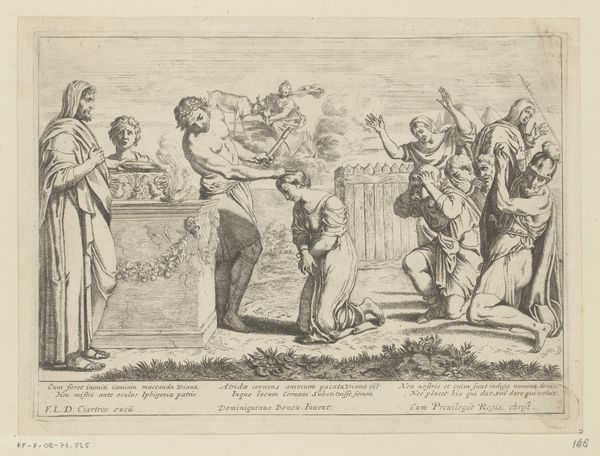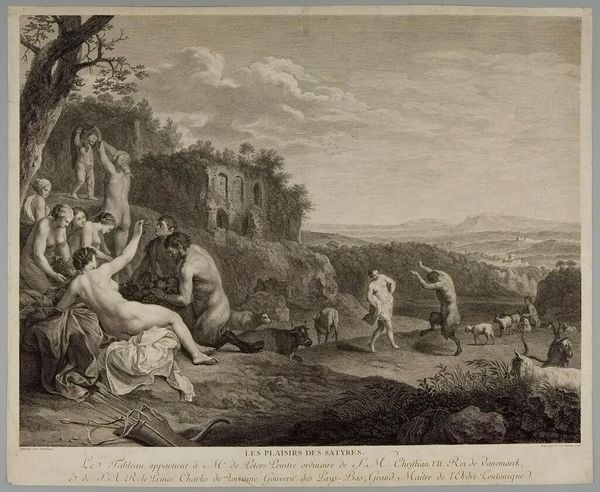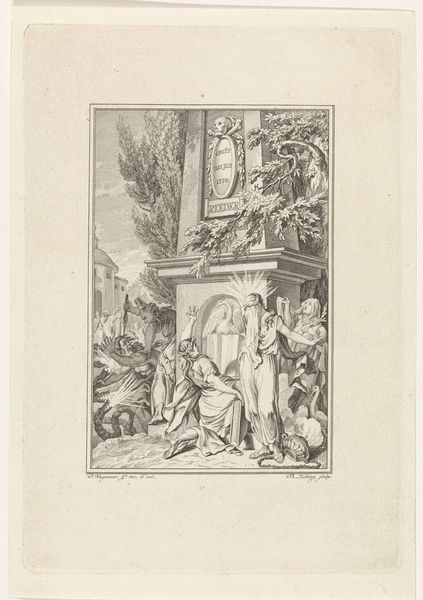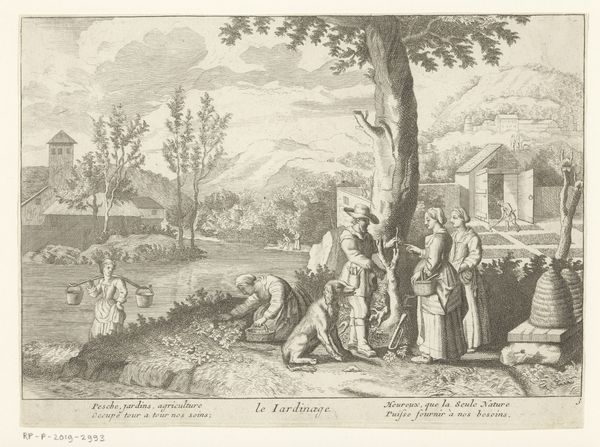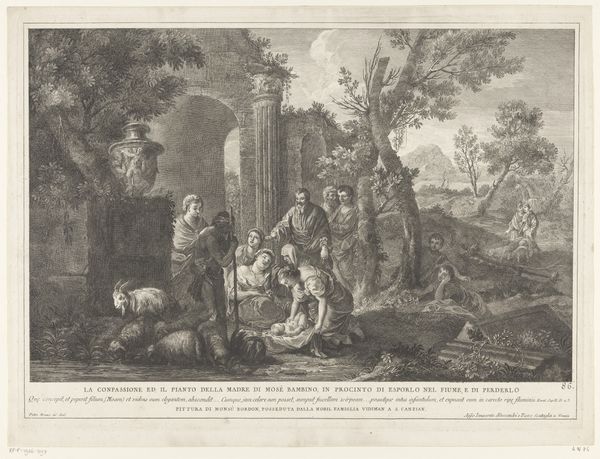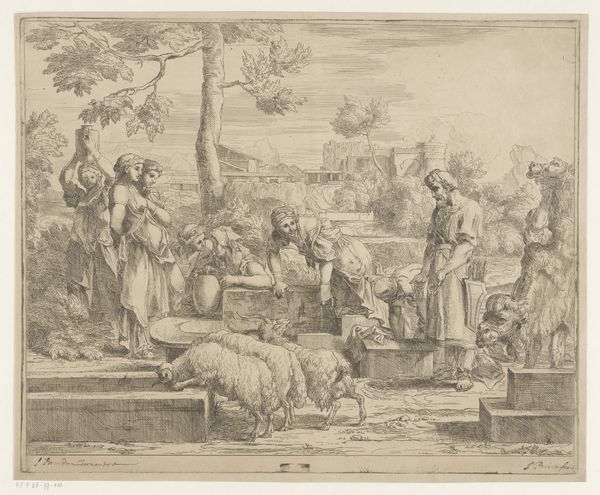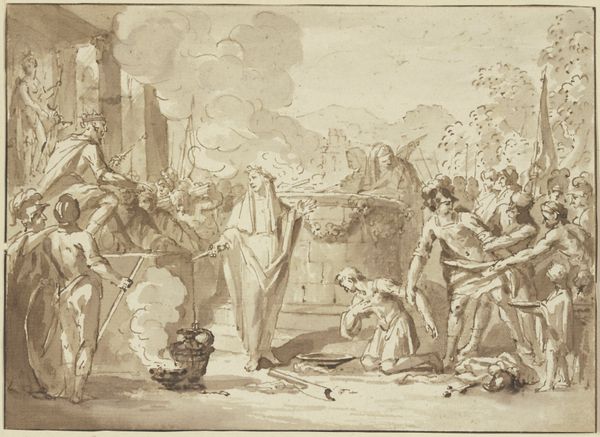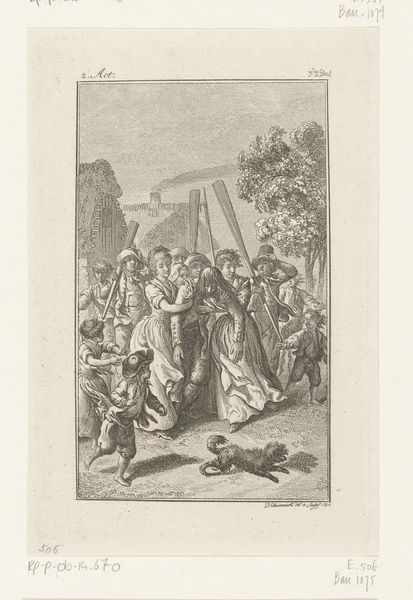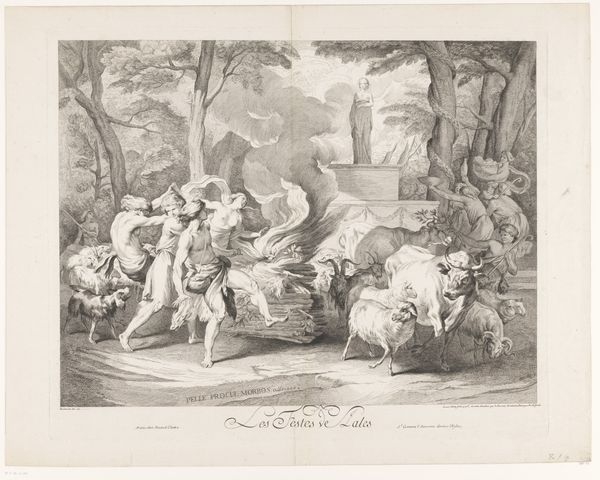
drawing, print, etching, paper, ink, engraving
#
pencil drawn
#
drawing
# print
#
etching
#
landscape
#
charcoal drawing
#
paper
#
ink
#
pencil drawing
#
genre-painting
#
history-painting
#
engraving
Dimensions: height 317 mm, width 470 mm
Copyright: Rijks Museum: Open Domain
Editor: So, this etching, "Tobit en het begraven van de doden" – loosely translated to "Tobit and the burying of the dead" – is attributed to Francesco Bartolozzi, likely made somewhere between 1738 and 1815. It’s quite striking how he's used such delicate lines to depict such a solemn scene. What immediately stands out to you when you look at this, considering its historical context? Curator: The neo-classical stage setting of ruins coupled with this historical narrative points to an interesting tension. There's a fascination with the past, specifically antiquity, but it's filtered through a lens of contemporary moral instruction. How does Bartolozzi's decision to use printmaking as a medium, in your opinion, affect the work's potential impact on its audience? Editor: That's a fascinating point. I guess because prints can be easily reproduced, it makes the story more accessible to a wider audience, turning it into more of a shared cultural reference point. Almost like spreading a moral lesson on a grand scale. So, do you think Bartolozzi was deliberately using this mass medium for that reason? Curator: Exactly. Think about it - at the time, prints played a critical role in disseminating knowledge and shaping public opinion. An accessible medium showing a figure engaging in virtuous acts like the burial of the dead becomes not just an image but also a didactic tool. It emphasizes the public role of art. Do you find this social commentary still resonates today? Editor: Absolutely, it does. It makes you think about the role of art in reminding people about basic human values, regardless of the time. I hadn’t considered how intentional the medium could be. Curator: It is precisely the clever intersection of content, style, and distribution method which makes art like this important to study. This work showcases the political dimensions of imagery that should inform contemporary debates about public role of art and media. Editor: This really opens up a new way of looking at how artists engage with social responsibilities and expectations!
Comments
No comments
Be the first to comment and join the conversation on the ultimate creative platform.

